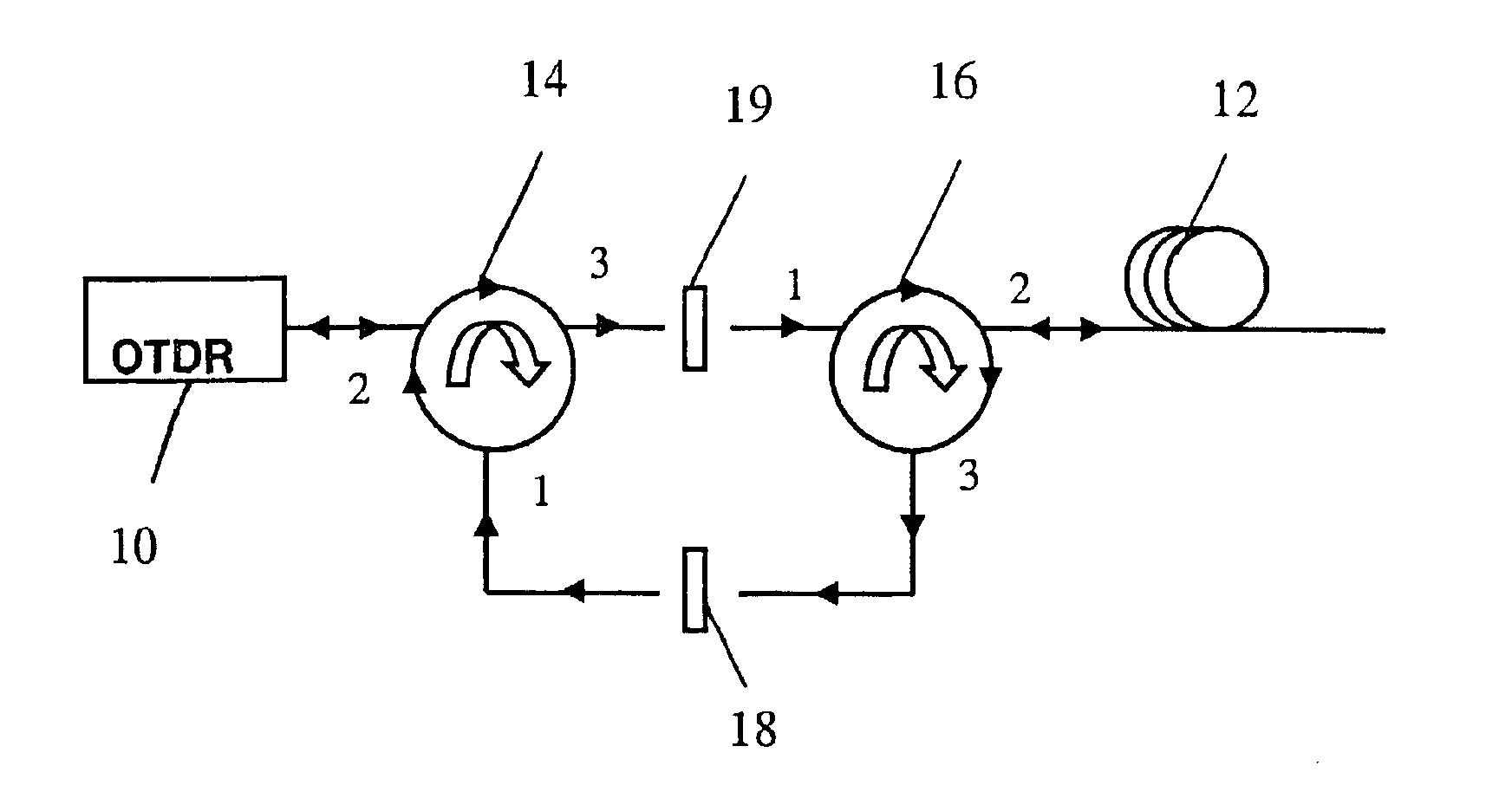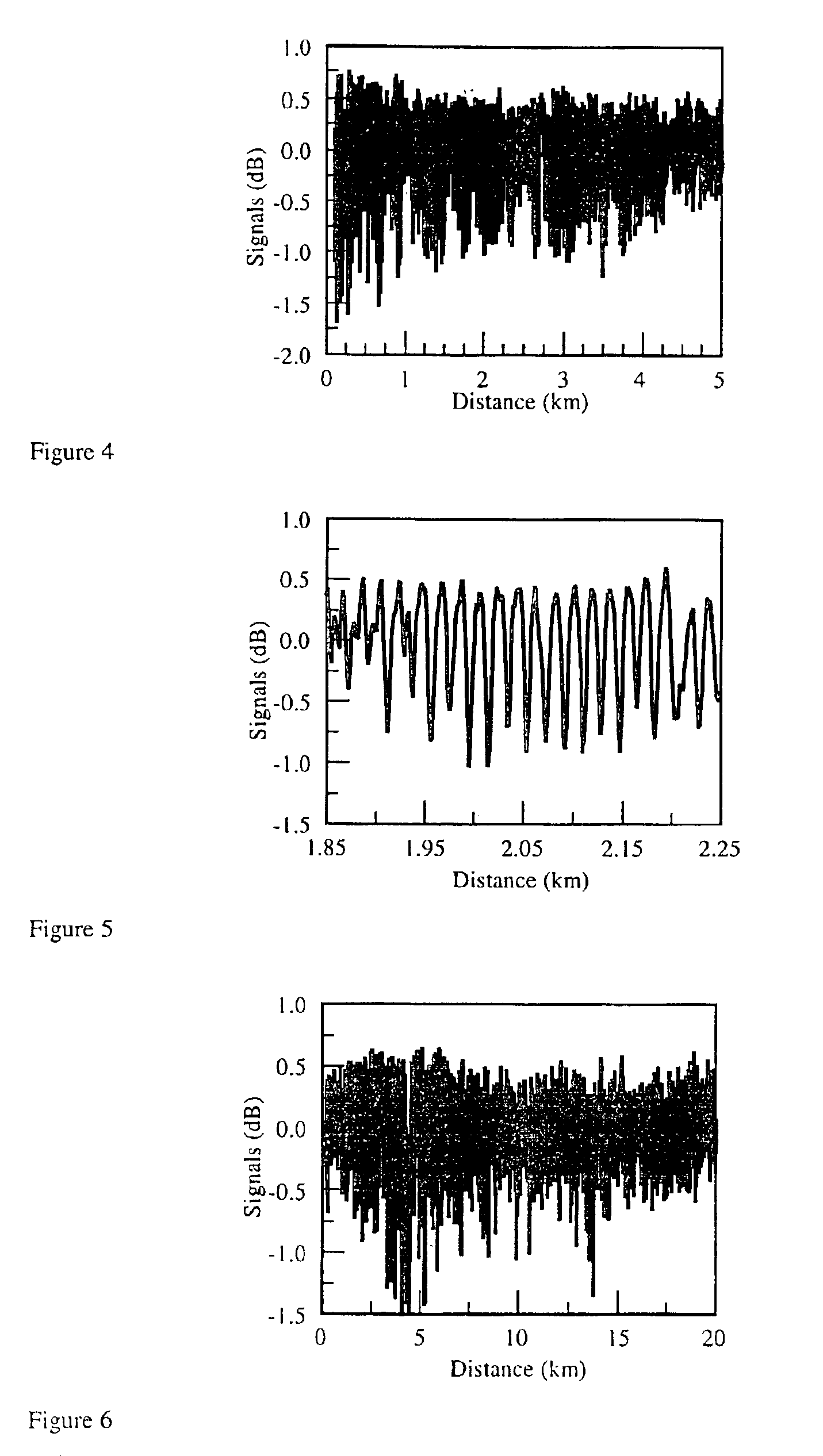Method of evaluating fiber PMD using polarization optical time domain reflectometry
a technology of optical time domain and fiber pmd, which is applied in the field of optical fibers, can solve the problems of limiting the transmission rate of pulses or the maximum distance of concatenated fiber medium, and achieve the effect of easy identification
- Summary
- Abstract
- Description
- Claims
- Application Information
AI Technical Summary
Benefits of technology
Problems solved by technology
Method used
Image
Examples
Embodiment Construction
[0031]FIG. 1 illustrates an arrangement suitable for use in practicing the method of the present invention. In FIG. 1, a conventional OTDR 10 apparatus is provided which is capable of sending a pulse of laser light down an optical waveguide fiber. The OTDR is capable of injecting a series of optical pulses into an optical fiber under test. The OTDR can also extract, from the same end of the fiber, light that is scattered back. The intensity of the return pulses is measured and integrated as a function of time, and is plotted as a function of fiber length. OTDR 10 launches a pulsed radiation into the optical fiber 12 which is to be tested for PMD. In the embodiment illustrated in FIG. 1, two optical circulators 14 and 16 and two polarizers 18 and 19 are provided. The optical circulators 14 and 16 are configured to loop the initial pulse of light emitted from the OTDR 10 to the fiber under test. As a result of rayleigh backscattering, some light is back reflected through the fiber bac...
PUM
| Property | Measurement | Unit |
|---|---|---|
| length | aaaaa | aaaaa |
| radius | aaaaa | aaaaa |
| length | aaaaa | aaaaa |
Abstract
Description
Claims
Application Information
 Login to View More
Login to View More - R&D
- Intellectual Property
- Life Sciences
- Materials
- Tech Scout
- Unparalleled Data Quality
- Higher Quality Content
- 60% Fewer Hallucinations
Browse by: Latest US Patents, China's latest patents, Technical Efficacy Thesaurus, Application Domain, Technology Topic, Popular Technical Reports.
© 2025 PatSnap. All rights reserved.Legal|Privacy policy|Modern Slavery Act Transparency Statement|Sitemap|About US| Contact US: help@patsnap.com



